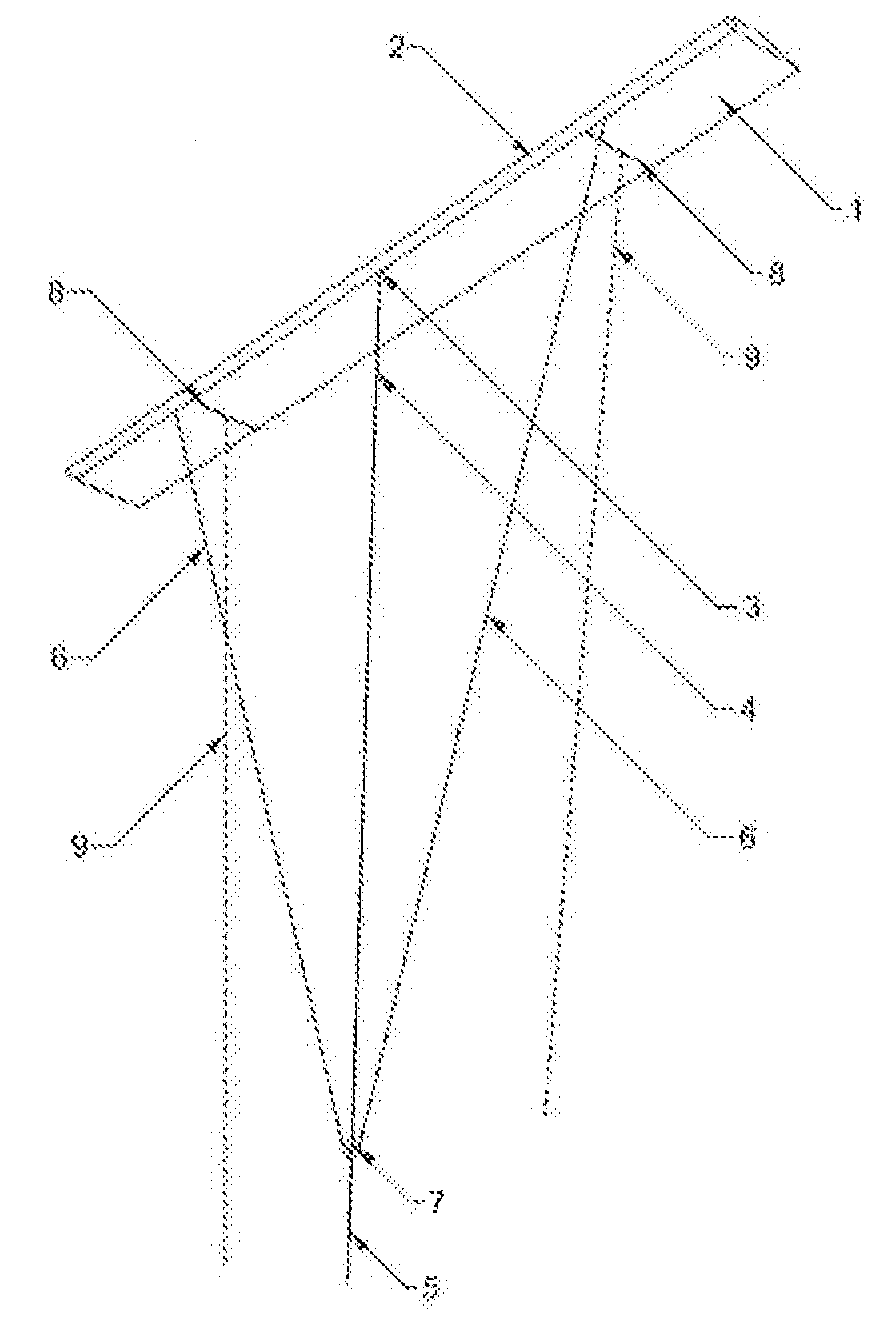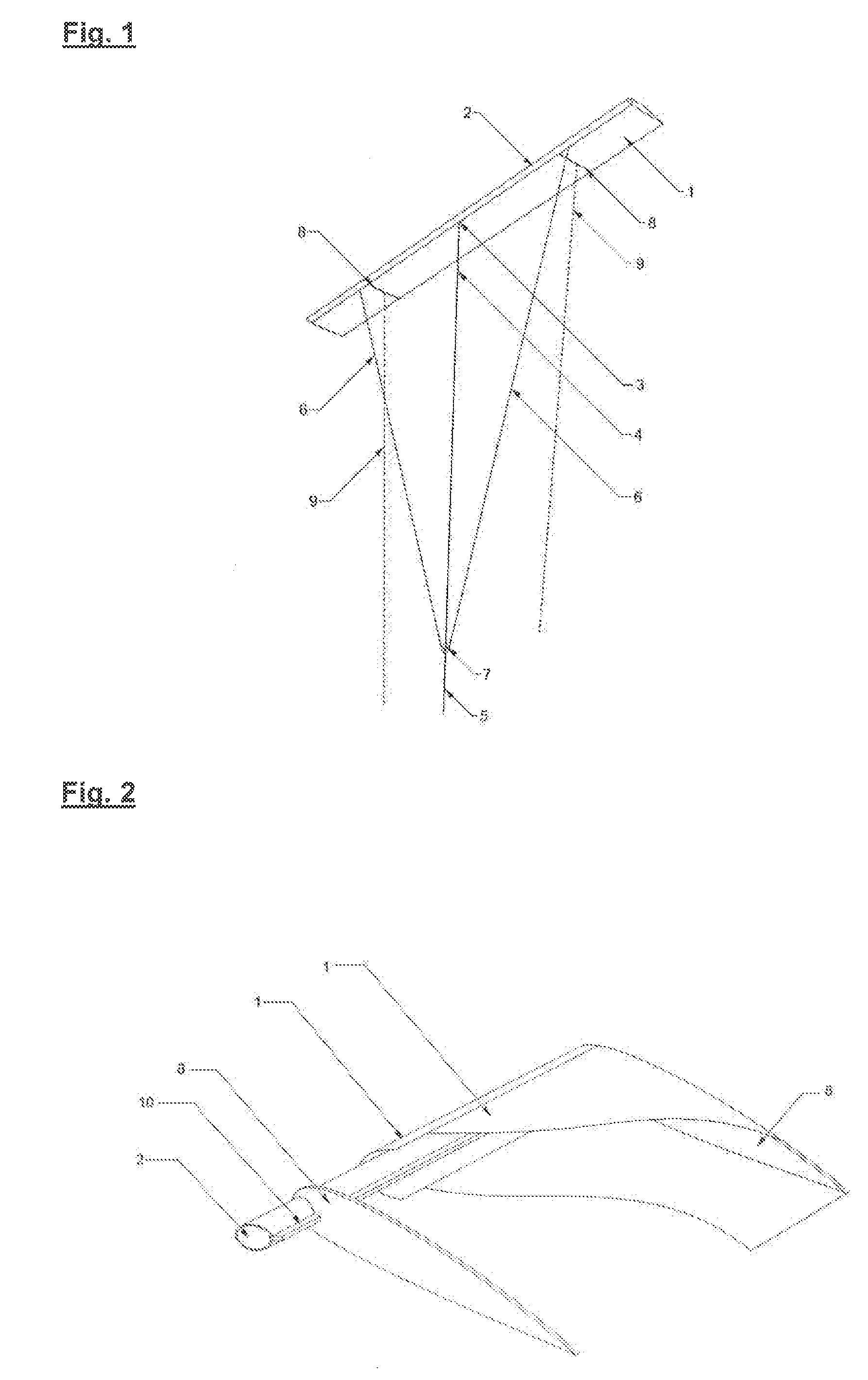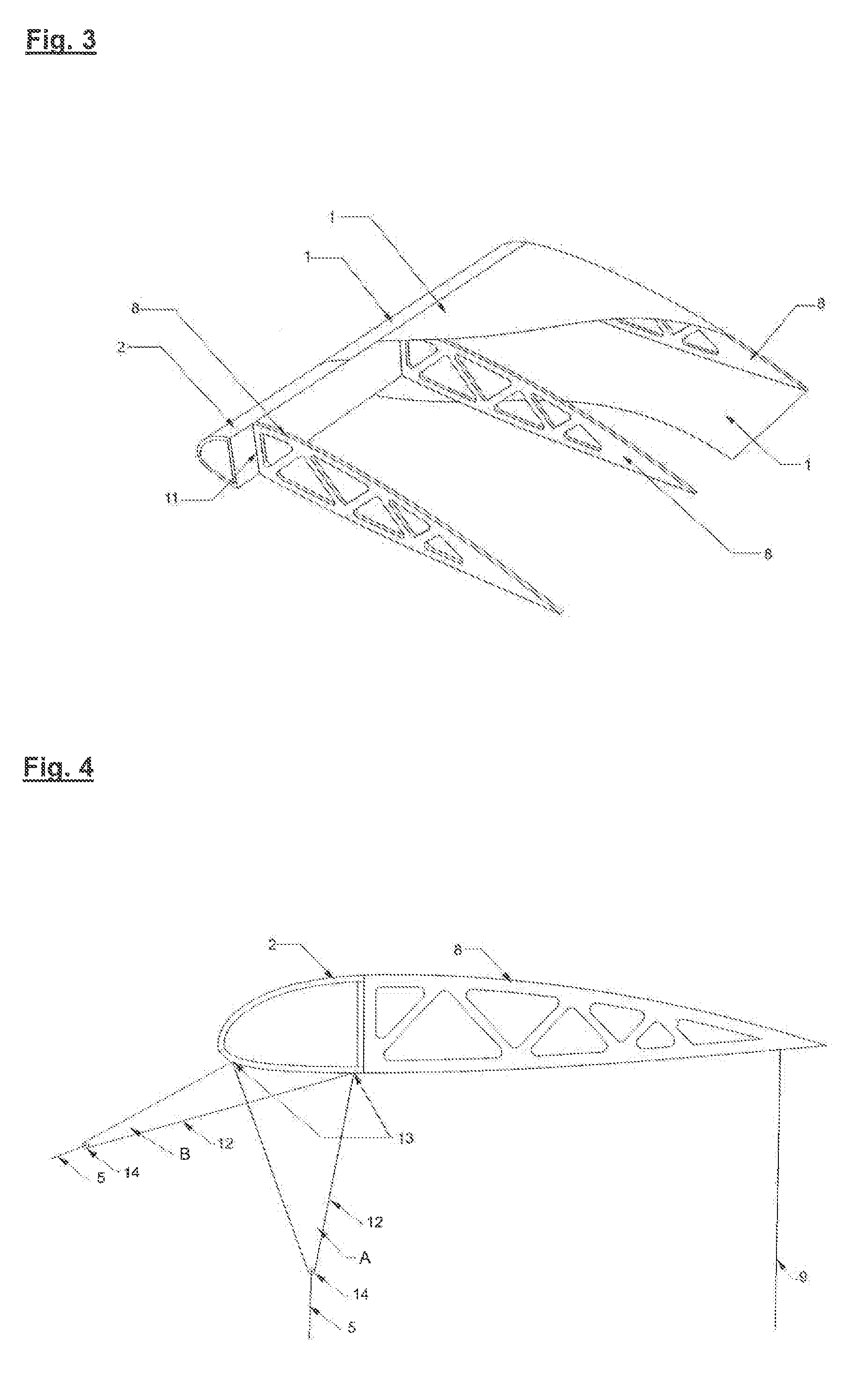Tethered wing system for wind energy use
a technology of wind energy and wing system, which is applied in the direction of machines/engines, transportation and packaging, toys, etc., can solve the problems of high air resistance, inefficient aerodynamic wing, and limited size and growth potential of this design, and achieve optimal energy generation and excellent gliding and flying characteristics
- Summary
- Abstract
- Description
- Claims
- Application Information
AI Technical Summary
Benefits of technology
Problems solved by technology
Method used
Image
Examples
Embodiment Construction
[0037]In a preferred embodiment, the invention-related wing design includes a multi-part wing bridle (5, 6, 7, 12, 13) consisting of tensile tethers, single, branched or multiply branched. Alternatively, the invention-related wing design has guidance devices (15, 16, 17) in the area of the profile spar (2), making it possible that the central bridle line (4) and / or the connection element (18, 19) and / or the wing bridles (5, 6, 7, 12, 13) can be moved backwards and forwards, so that the said elements can take a lateral or transverse position to the wing or also positions in between.
[0038]The profile spar (2) has a D-form (closed) according to the invention or an open U-shape and is made of a hard but flexible material, preferably of plastic. Typically, the connection devices (3, 4, 5, 6, 7, 18, 14) are attached in the area of the largest load impact, so preferably in the area of the profile spar (2). In doing so, said elements can be in the lower part of the spar profile body outside...
PUM
 Login to View More
Login to View More Abstract
Description
Claims
Application Information
 Login to View More
Login to View More - R&D
- Intellectual Property
- Life Sciences
- Materials
- Tech Scout
- Unparalleled Data Quality
- Higher Quality Content
- 60% Fewer Hallucinations
Browse by: Latest US Patents, China's latest patents, Technical Efficacy Thesaurus, Application Domain, Technology Topic, Popular Technical Reports.
© 2025 PatSnap. All rights reserved.Legal|Privacy policy|Modern Slavery Act Transparency Statement|Sitemap|About US| Contact US: help@patsnap.com



